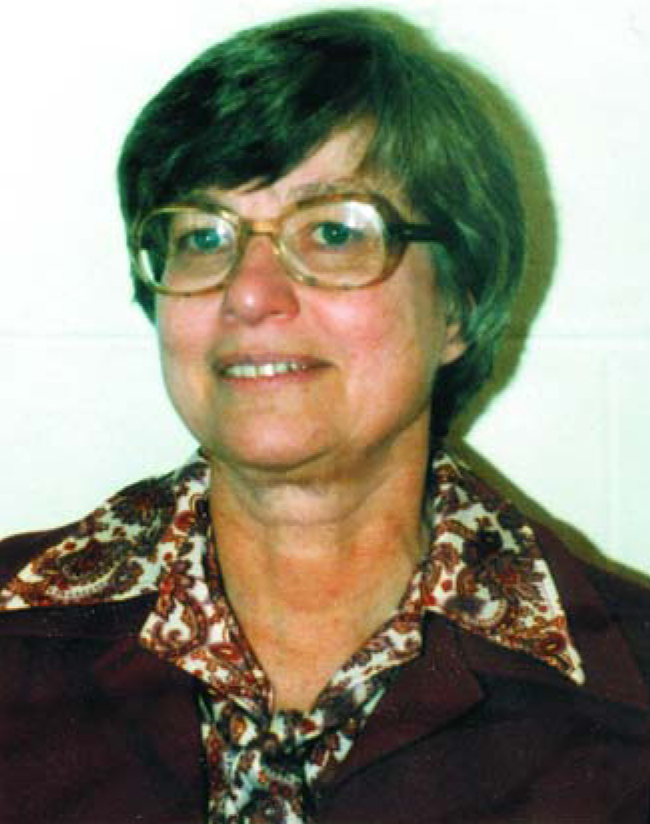Mildred Widgoff
DOI: 10.1063/1.1995764
Following World War II, in years not famous for providing easy paths for women in science, Mildred Widgoff was a successful scientist and a pathfinder for others. Her research career spanned the fields now called particle physics and particle astrophysics, and covered not only the development of our understanding of the physics but also a series of revolutions in the associated detector technology she used. A professor of physics emerita at Brown University, Mildred died at her home in Barrington, Rhode Island, on 21 July 2004 after a short illness.
Born on 24 August 1924 in Buffalo, New York, Mildred received a BA in physics from the University of Buffalo in 1944. Still only 19 years old, she was recruited to work on the Manhattan Project. In 1952, she completed graduate study in Cornell University’s cosmic-ray group under the leadership of Giuseppe Cocconi and Kenneth Greisen and received her PhD with a thesis entitled “Neutrons from Interactions of Mu Mesons in Various Targets.” After an apprenticeship in the group’s high-altitude work on Mt. Evans, Colorado (now the site of the Meyer–Womble Observatory), she carried out her own research on cosmic-ray muons in an early underground site in Ithaca, New York. Mildred often joked about a certain symmetry in her research career: After years at accelerator facilities, her last experiment was also underground, at the Gran Sasso Laboratory in Italy, and involved the study of cosmic-ray muons.
Mildred subsequently joined the research staff of Brookhaven National Laboratory and, in 1955, became a research fellow at the Harvard University Cyclotron Laboratory. In 1958, she joined the Brown faculty as a research assistant professor and worked concurrently at Harvard until 1961 as a consultant for the Cambridge Electron Accelerator. She remained a faculty member at Brown and continued active involvement in particle physics experiments at facilities worldwide until her retirement as professor in 1995.
At an time when “strange particles” in cosmic rays were studied using cloud chambers and emulsions, her first experiments after arriving at Brown centered on the so-called tau-theta puzzle and involved the use of emulsions exposed to the accelerator beams of the newly built Cosmotron at Brookhaven and Bevatron at the University of California, Berkeley. She also carried out emulsion work at the Harvard cyclotron.
During the 1960s, Mildred engaged in experiments as part of the Cambridge Bubble Chamber Group, a collaboration of scientists from Brown, Brandeis University, Harvard, and MIT. That work included a series of studies of meson spectroscopy via photoproduction at the Cambridge Electron Accelerator. As a member of the International Hybrid Spectrometer Collaboration (IHSC), she constructed a large counter hodoscope system so that a spectrometer could be added to form a powerful hybrid system that was installed at Fermilab in the 1970s and 1980s. With the availability of very-high-energy photon beams at SLAC, she used photoproduction as a spectroscopy tool.
Following the SLAC experiments, Mildred took an active role in the construction and subsequent use of the Large Volume Detector at Gran Sasso to do neutrino astrophysics. Her hardware and software contributions were critical to the success of not only the LVD, but also the Cambridge Bubble Chamber Group and the IHSC.
Mildred was involved in the affairs of Brown University and in its physics department. She was Brown’s executive officer from 1968 to 1980. She served the physics community as chair and member of the American Physical Society’s committee on the status of women in physics (1973–75) and as chair of APS’s New England section (1974–75). From 1976 to 1985, she was a trustee of the American Institute of Physics Insurance Trust. In 1990, she served on the NSF panel Faculty Awards for Women.
Mildred had one of the most positive outlooks of anyone we knew. She genuinely loved being with people, doing physics, and making things work. To her students, she was a devoted mentor and a caring friend. To us, she was a unique and beloved colleague.

Mildred Widgoff

More about the Authors
David Cutts. Brown University, Providence, Rhode Island, US.
Robert Lanou. Brown University, Providence, Rhode Island, US.
Irwin Pless. Massachusetts Institute of Technology, Cambridge, US.
